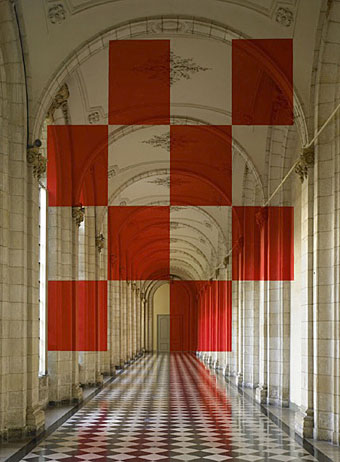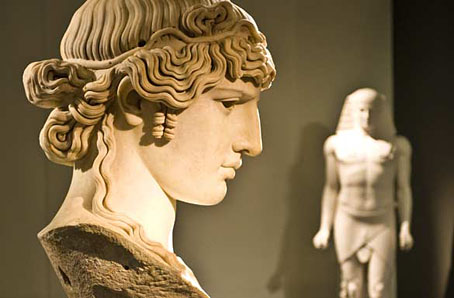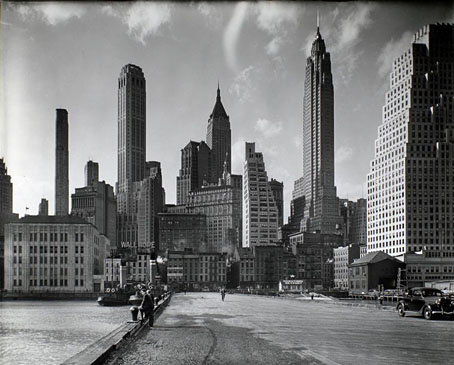A visitor examining Seizure. Photograph by Sarah Lee.
I’d love to see this installation work which opened on Wednesday at 157 Harper Road, Southwark, London. British artist Roger Hiorns has transformed a flat awaiting demolition by growing thick mats of copper sulphate crystals on all the interior surfaces, a work he calls Seizure. Copper sulphate always brings back memories of chemistry lessons at school and childhood chemistry sets. I recall growing the crystals in a test tube but such meagre attempts at efflorescence give little indication of how beautiful these things are at a larger scale. Happily Flickr has further documentation of Hiorns’ work while Adrian Searle reviews it for The Guardian, fittingly referencing JG Ballard’s The Crystal World. “Seizure is a sort of sci-fi nightmare in Southwark, and that this happens in a council flat makes it all the more uncanny and disturbing,” he says. A shame, then, that it wasn’t situated in an empty high-rise block for maximum Ballard overload.
Seizure runs until 2 November, 2008. Artangel has location details and opening times.
Previously on { feuilleton }
• JG Ballard book covers




